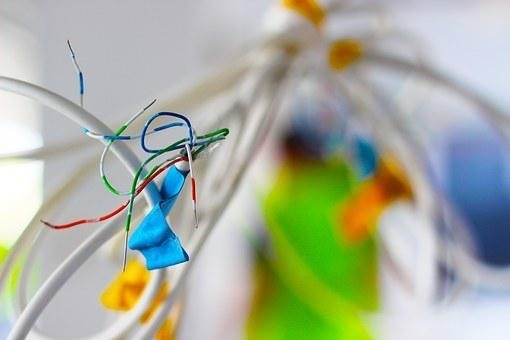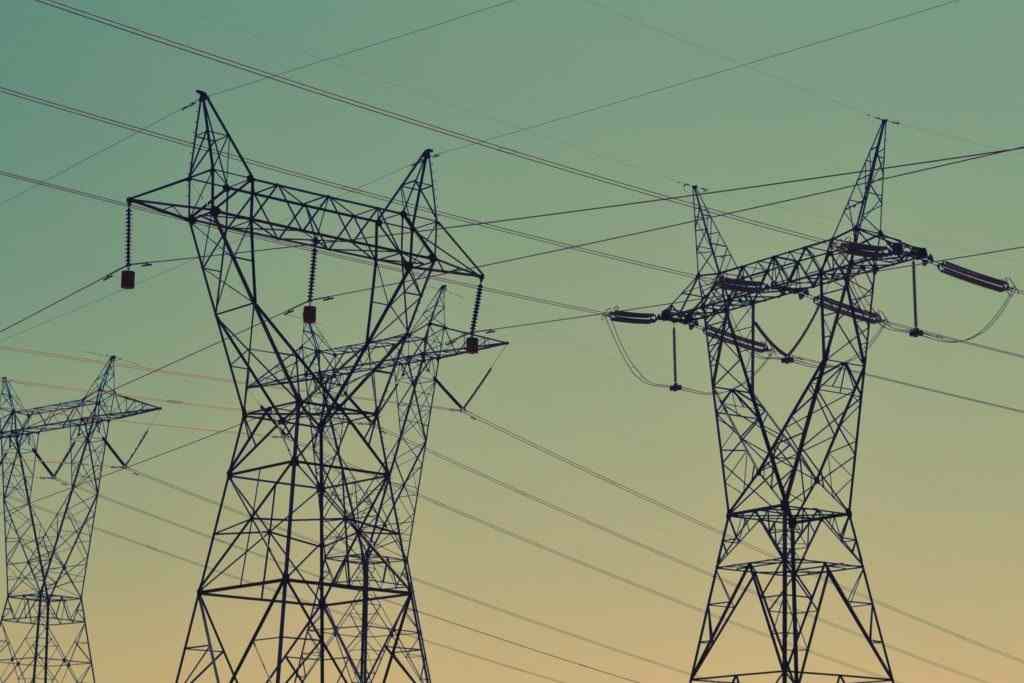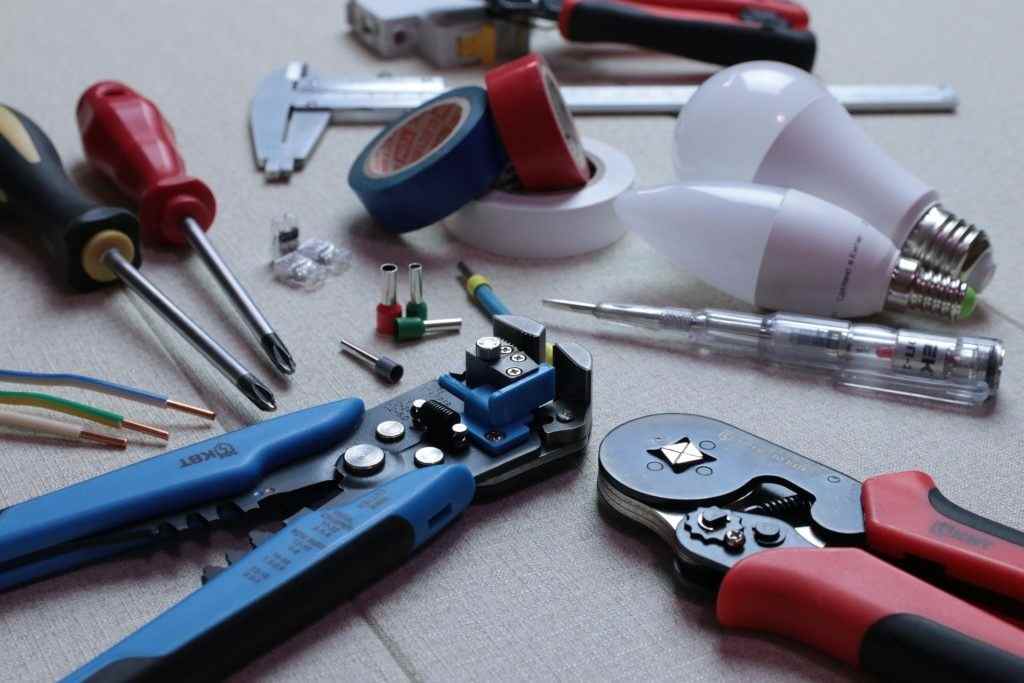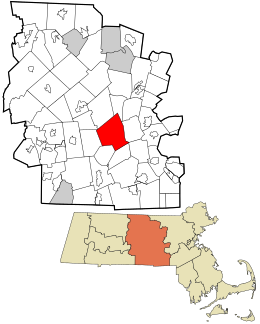Electrician in Essex
Improving or changing a circuit breaker is not as easy as just moving the location of the wire you are switching out. But the circuit panel in a lot of homes does not always require to be completely replaced.
Electrician Essex
Non-metallic sheathed electrical cable, commonly referred to as "Romex," is common throughout the home. The cable's three separate conductors are wrapped in a flexible plastic jacket. They contain the hot, neutral, and ground wires. When you're choosing a Romex cable, make sure it's NM-B. In case your wires need repair, you can call a certified electrician to repair your unit.
Two 120-volt service wires carry electricity to your home. Your electric service enters your house through two 120-volt service wires. Most 120-volt circuits draw power from one wire, while 240-volt circuits draw energy from both. Both wires are neutral, which means that if one fails to draw power, the other will. Energy is delivered to your home either through the roof masthead or through underground conduit. Your home's electric meter is installed where the electricity enters. It is used to monitor how much energy your home is using.

Improving or changing a circuit breaker is not as easy as just moving the location of the wire you are switching out. But the circuit panel in a lot of homes does not always require to be completely replaced.
An electrician can be described as a professional who designs and installs electrical systems. They are responsible for making sure that all their work is compliant with the code. According to U.S. Bureau of Labor Statistics in May 2018, there were 655 840 electricians. For diagnosing electrical problems, electricians can use a variety diagrams and testing devices. An electrician must not only test wiring and circuits but also adhere to safety codes, as detailed in the National Electrical Code.

Referrals are a key part of your search for an electrician. Ask for references from multiple electricians before making a decision. This will give you an idea of what to expect from the electrician. It is also a good idea to inquire about their rates because these prices can vary greatly. Multiple estimates from different electricians will help determine which one you should hire.
Electrical Contractors have evolved over time. Therefore, it is difficult to design an organization that works. But, a departmental-based organisational structure can be a great way to help your business adapt to the future and grow. It is important to plan in both the short-term as well as long-term. Peter Drucker is a noted American philosopher who once stated, "The most important thing about long-range plan is that it isn't about the future. It's about today."

Promote yourself as an electrical contractor in your area. This is a great way of making yourself easily recognizable. It is important to ask for referrals and reviews from electricians. Even a simple request to tell a friend can go a very long way. You can also increase your visibility on online directories in order to attract more clients. The more people that know you and who have had positive experiences using your services, the greater!
|
This article needs additional citations for verification. Please help improve this article by adding citations to reliable sources. Unsourced material may be challenged and removed.
Find sources: "Worcester, Massachusetts" – news · newspapers · books · scholar · JSTOR (August 2022) (Learn how and when to remove this template message) |
|
Worcester, Massachusetts
|
|
|---|---|
| City of Worcester | |
|
Clockwise from top: The Worcester Skyline, the American Antiquarian Society, Worcester Union Station, Bancroft Tower, Paul Revere Road, a triple-decker house on Catharine Street, and City Hall
|
|
| Nickname(s):
The City of the Seven Hills, The Heart of the Commonwealth, Wormtown, Woo-town, The Woo
|
|

Location within Worcester County
|
|
Coordinates:  42°16′17″N 71°47′56″WCoordinates: 42°16′17″N 71°47′56″WCoordinates:  42°16′17″N 71°47′56″W 42°16′17″N 71°47′56″W |
|
| Country | United States |
| State | Massachusetts |
| County | Worcester |
| Region | New England |
| Historic countries | Kingdom of England Kingdom of Great Britain |
| Historic colonies | Massachusetts Bay Colony Dominion of New England Province of Massachusetts Bay |
| Settled | 1673 |
| Incorporated as a town | June 14, 1722 |
| Incorporated as a city | February 29, 1848 |
| Named for | Worcester, Worcestershire |
| Government | |
| • Type | Council–manager |
| • City Manager | Edward M. Augustus Jr. (D) |
| • Mayor | Joseph Petty (D) |
| Area | |
| • City | 38.44 sq mi (99.57 km2) |
| • Land | 37.36 sq mi (96.76 km2) |
| • Water | 1.08 sq mi (2.81 km2) |
| Elevation | 480 ft (146 m) |
| Population
(2020)
|
|
| • City | 206,518 |
| • Density | 5,527.78/sq mi (2,134.27/km2) |
| • Metro | 923,672 |
| Time zone | UTC−5 (Eastern) |
| • Summer (DST) | UTC−4 (Eastern) |
| ZIP code |
01601–01610, 01612–01615, 01653–01655
|
| Area code | 508 / 774 |
| FIPS code 0 | 25-82000 |
| GNIS feature ID | 0617867 |
| GDP | $45.393131 billion (as of 2018, in 2012 US chained dollars)[2] |
| GDP per capita | $45,528 per person[2][3] |
| Website | www |
Worcester (/ˈwʊstər/ (![]() listen) WUUS-tər, locally [ˈwɪstə])[4] is a city and county seat of Worcester County, Massachusetts, United States. Named after Worcester, Worcestershire, England, as of the 2020 census the city's population was 206,518,[5] making it the second-most populous city in New England after Boston.[a] Worcester is approximately 40 miles (64 km) west of Boston, 50 miles (80 km) east of Springfield and 40 miles (64 km) north-northwest of Providence. Due to its location near the geographic center of Massachusetts, Worcester is known as the "Heart of the Commonwealth"; a heart is the official symbol of the city.
listen) WUUS-tər, locally [ˈwɪstə])[4] is a city and county seat of Worcester County, Massachusetts, United States. Named after Worcester, Worcestershire, England, as of the 2020 census the city's population was 206,518,[5] making it the second-most populous city in New England after Boston.[a] Worcester is approximately 40 miles (64 km) west of Boston, 50 miles (80 km) east of Springfield and 40 miles (64 km) north-northwest of Providence. Due to its location near the geographic center of Massachusetts, Worcester is known as the "Heart of the Commonwealth"; a heart is the official symbol of the city.
Worcester developed as an industrial city in the 19th century due to the Blackstone Canal and rail transport, producing machinery, textiles and wire. Large numbers of European immigrants made up the city's growing population. However, the city's manufacturing base waned following World War II. Long-term economic and population decline was not reversed until the 1990s, when higher education, medicine, biotechnology, and new immigrants started to make their mark. The city's population has grown by 28% since 1980, reaching a new all-time high in the 2020 census and experiencing urban renewal.
Modern Worcester is known for its diversity and large immigrant population, with significant communities of Vietnamese, Brazilians, Albanians, Puerto Ricans, Ghanaians, Dominicans, and others.[7] 22% of Worcester's population was born outside the United States.[8] A center of higher education, it is home to eight separate colleges and universities, including Holy Cross, Worcester Polytechnic Institute (WPI), and Clark University. Architecturally, Worcester is notable for its large number of 19th century triple-decker houses, Victorian-era mill architecture, and lunch car diners such as Miss Worcester.
Worcester is the principal city of Central Massachusetts, and is a regional government, employment and transportation hub. Since the 1970s, and especially after the construction of Route 146 and interstates 90, 495, 190, 290, and 395, both Worcester and its surrounding towns have become increasingly integrated with Boston's suburbs. The Worcester region now marks the western periphery of the Boston-Worcester-Providence (MA-RI-NH) U.S. Census Combined Statistical Area (CSA), or Greater Boston.
|
This article needs additional citations for verification. Please help improve this article by adding citations to reliable sources. Unsourced material may be challenged and removed.
Find sources: "Worcester, Massachusetts" – news · newspapers · books · scholar · JSTOR (August 2022) (Learn how and when to remove this template message) |
|
Worcester, Massachusetts
|
|
|---|---|
| City of Worcester | |
|
Clockwise from top: The Worcester Skyline, the American Antiquarian Society, Worcester Union Station, Bancroft Tower, Paul Revere Road, a triple-decker house on Catharine Street, and City Hall
|
|
| Nickname(s):
The City of the Seven Hills, The Heart of the Commonwealth, Wormtown, Woo-town, The Woo
|
|

Location within Worcester County
|
|
Coordinates:  42°16′17″N 71°47′56″WCoordinates: 42°16′17″N 71°47′56″WCoordinates:  42°16′17″N 71°47′56″W 42°16′17″N 71°47′56″W |
|
| Country | United States |
| State | Massachusetts |
| County | Worcester |
| Region | New England |
| Historic countries | Kingdom of England Kingdom of Great Britain |
| Historic colonies | Massachusetts Bay Colony Dominion of New England Province of Massachusetts Bay |
| Settled | 1673 |
| Incorporated as a town | June 14, 1722 |
| Incorporated as a city | February 29, 1848 |
| Named for | Worcester, Worcestershire |
| Government | |
| • Type | Council–manager |
| • City Manager | Edward M. Augustus Jr. (D) |
| • Mayor | Joseph Petty (D) |
| Area | |
| • City | 38.44 sq mi (99.57 km2) |
| • Land | 37.36 sq mi (96.76 km2) |
| • Water | 1.08 sq mi (2.81 km2) |
| Elevation | 480 ft (146 m) |
| Population
(2020)
|
|
| • City | 206,518 |
| • Density | 5,527.78/sq mi (2,134.27/km2) |
| • Metro | 923,672 |
| Time zone | UTC−5 (Eastern) |
| • Summer (DST) | UTC−4 (Eastern) |
| ZIP code |
01601–01610, 01612–01615, 01653–01655
|
| Area code | 508 / 774 |
| FIPS code 0 | 25-82000 |
| GNIS feature ID | 0617867 |
| GDP | $45.393131 billion (as of 2018, in 2012 US chained dollars)[2] |
| GDP per capita | $45,528 per person[2][3] |
| Website | www |
Worcester (/ˈwʊstər/ (![]() listen) WUUS-tər, locally [ˈwɪstə])[4] is a city and county seat of Worcester County, Massachusetts, United States. Named after Worcester, Worcestershire, England, as of the 2020 census the city's population was 206,518,[5] making it the second-most populous city in New England after Boston.[a] Worcester is approximately 40 miles (64 km) west of Boston, 50 miles (80 km) east of Springfield and 40 miles (64 km) north-northwest of Providence. Due to its location near the geographic center of Massachusetts, Worcester is known as the "Heart of the Commonwealth"; a heart is the official symbol of the city.
listen) WUUS-tər, locally [ˈwɪstə])[4] is a city and county seat of Worcester County, Massachusetts, United States. Named after Worcester, Worcestershire, England, as of the 2020 census the city's population was 206,518,[5] making it the second-most populous city in New England after Boston.[a] Worcester is approximately 40 miles (64 km) west of Boston, 50 miles (80 km) east of Springfield and 40 miles (64 km) north-northwest of Providence. Due to its location near the geographic center of Massachusetts, Worcester is known as the "Heart of the Commonwealth"; a heart is the official symbol of the city.
Worcester developed as an industrial city in the 19th century due to the Blackstone Canal and rail transport, producing machinery, textiles and wire. Large numbers of European immigrants made up the city's growing population. However, the city's manufacturing base waned following World War II. Long-term economic and population decline was not reversed until the 1990s, when higher education, medicine, biotechnology, and new immigrants started to make their mark. The city's population has grown by 28% since 1980, reaching a new all-time high in the 2020 census and experiencing urban renewal.
Modern Worcester is known for its diversity and large immigrant population, with significant communities of Vietnamese, Brazilians, Albanians, Puerto Ricans, Ghanaians, Dominicans, and others.[7] 22% of Worcester's population was born outside the United States.[8] A center of higher education, it is home to eight separate colleges and universities, including Holy Cross, Worcester Polytechnic Institute (WPI), and Clark University. Architecturally, Worcester is notable for its large number of 19th century triple-decker houses, Victorian-era mill architecture, and lunch car diners such as Miss Worcester.
Worcester is the principal city of Central Massachusetts, and is a regional government, employment and transportation hub. Since the 1970s, and especially after the construction of Route 146 and interstates 90, 495, 190, 290, and 395, both Worcester and its surrounding towns have become increasingly integrated with Boston's suburbs. The Worcester region now marks the western periphery of the Boston-Worcester-Providence (MA-RI-NH) U.S. Census Combined Statistical Area (CSA), or Greater Boston.
|
This article needs additional citations for verification. Please help improve this article by adding citations to reliable sources. Unsourced material may be challenged and removed.
Find sources: "Worcester, Massachusetts" – news · newspapers · books · scholar · JSTOR (August 2022) (Learn how and when to remove this template message) |
|
Worcester, Massachusetts
|
|
|---|---|
| City of Worcester | |
|
Clockwise from top: The Worcester Skyline, the American Antiquarian Society, Worcester Union Station, Bancroft Tower, Paul Revere Road, a triple-decker house on Catharine Street, and City Hall
|
|
| Nickname(s):
The City of the Seven Hills, The Heart of the Commonwealth, Wormtown, Woo-town, The Woo
|
|

Location within Worcester County
|
|
Coordinates:  42°16′17″N 71°47′56″WCoordinates: 42°16′17″N 71°47′56″WCoordinates:  42°16′17″N 71°47′56″W 42°16′17″N 71°47′56″W |
|
| Country | United States |
| State | Massachusetts |
| County | Worcester |
| Region | New England |
| Historic countries | Kingdom of England Kingdom of Great Britain |
| Historic colonies | Massachusetts Bay Colony Dominion of New England Province of Massachusetts Bay |
| Settled | 1673 |
| Incorporated as a town | June 14, 1722 |
| Incorporated as a city | February 29, 1848 |
| Named for | Worcester, Worcestershire |
| Government | |
| • Type | Council–manager |
| • City Manager | Edward M. Augustus Jr. (D) |
| • Mayor | Joseph Petty (D) |
| Area | |
| • City | 38.44 sq mi (99.57 km2) |
| • Land | 37.36 sq mi (96.76 km2) |
| • Water | 1.08 sq mi (2.81 km2) |
| Elevation | 480 ft (146 m) |
| Population
(2020)
|
|
| • City | 206,518 |
| • Density | 5,527.78/sq mi (2,134.27/km2) |
| • Metro | 923,672 |
| Time zone | UTC−5 (Eastern) |
| • Summer (DST) | UTC−4 (Eastern) |
| ZIP code |
01601–01610, 01612–01615, 01653–01655
|
| Area code | 508 / 774 |
| FIPS code 0 | 25-82000 |
| GNIS feature ID | 0617867 |
| GDP | $45.393131 billion (as of 2018, in 2012 US chained dollars)[2] |
| GDP per capita | $45,528 per person[2][3] |
| Website | www |
Worcester (/ˈwʊstər/ (![]() listen) WUUS-tər, locally [ˈwɪstə])[4] is a city and county seat of Worcester County, Massachusetts, United States. Named after Worcester, Worcestershire, England, as of the 2020 census the city's population was 206,518,[5] making it the second-most populous city in New England after Boston.[a] Worcester is approximately 40 miles (64 km) west of Boston, 50 miles (80 km) east of Springfield and 40 miles (64 km) north-northwest of Providence. Due to its location near the geographic center of Massachusetts, Worcester is known as the "Heart of the Commonwealth"; a heart is the official symbol of the city.
listen) WUUS-tər, locally [ˈwɪstə])[4] is a city and county seat of Worcester County, Massachusetts, United States. Named after Worcester, Worcestershire, England, as of the 2020 census the city's population was 206,518,[5] making it the second-most populous city in New England after Boston.[a] Worcester is approximately 40 miles (64 km) west of Boston, 50 miles (80 km) east of Springfield and 40 miles (64 km) north-northwest of Providence. Due to its location near the geographic center of Massachusetts, Worcester is known as the "Heart of the Commonwealth"; a heart is the official symbol of the city.
Worcester developed as an industrial city in the 19th century due to the Blackstone Canal and rail transport, producing machinery, textiles and wire. Large numbers of European immigrants made up the city's growing population. However, the city's manufacturing base waned following World War II. Long-term economic and population decline was not reversed until the 1990s, when higher education, medicine, biotechnology, and new immigrants started to make their mark. The city's population has grown by 28% since 1980, reaching a new all-time high in the 2020 census and experiencing urban renewal.
Modern Worcester is known for its diversity and large immigrant population, with significant communities of Vietnamese, Brazilians, Albanians, Puerto Ricans, Ghanaians, Dominicans, and others.[7] 22% of Worcester's population was born outside the United States.[8] A center of higher education, it is home to eight separate colleges and universities, including Holy Cross, Worcester Polytechnic Institute (WPI), and Clark University. Architecturally, Worcester is notable for its large number of 19th century triple-decker houses, Victorian-era mill architecture, and lunch car diners such as Miss Worcester.
Worcester is the principal city of Central Massachusetts, and is a regional government, employment and transportation hub. Since the 1970s, and especially after the construction of Route 146 and interstates 90, 495, 190, 290, and 395, both Worcester and its surrounding towns have become increasingly integrated with Boston's suburbs. The Worcester region now marks the western periphery of the Boston-Worcester-Providence (MA-RI-NH) U.S. Census Combined Statistical Area (CSA), or Greater Boston.